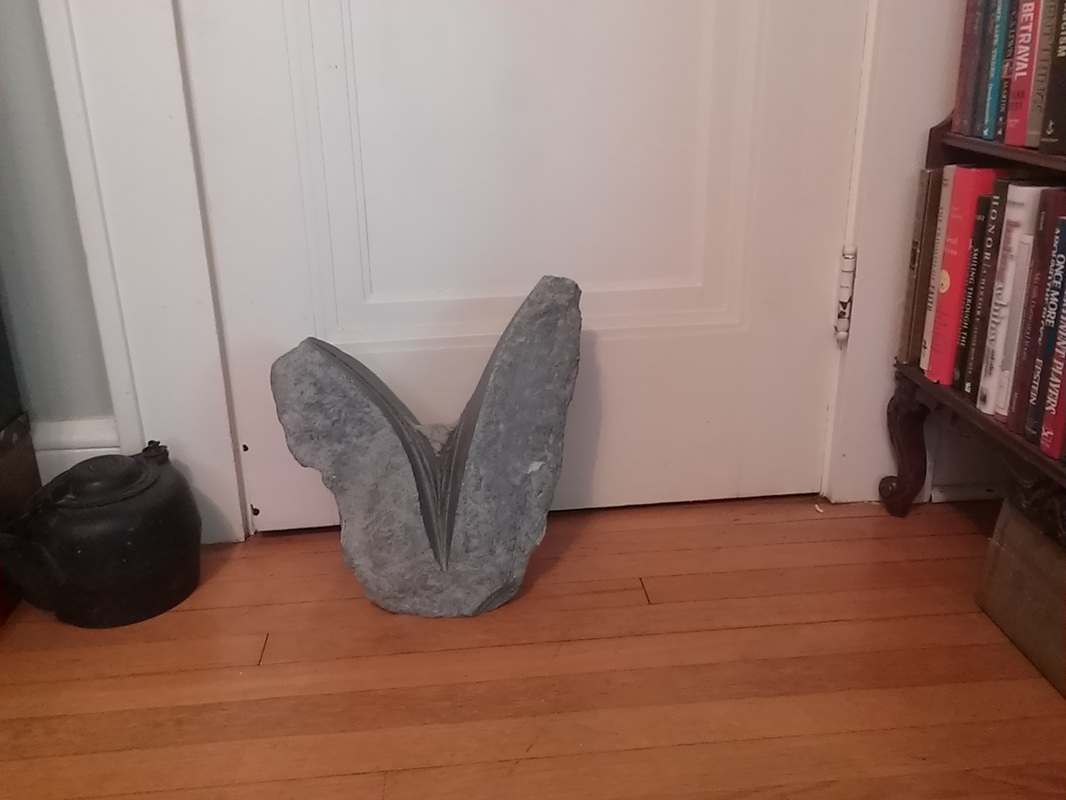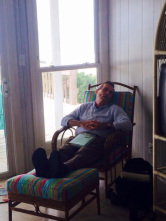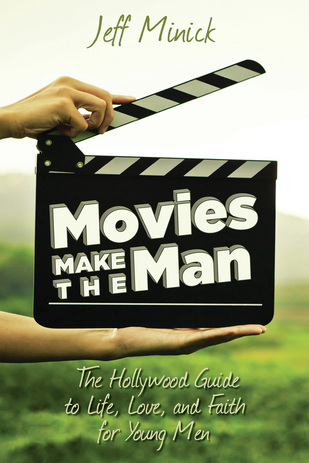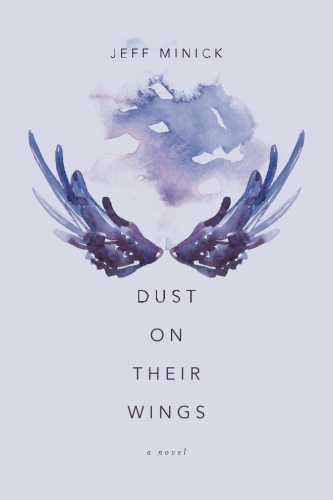If talk of vaginas, particularly those made of stone, makes you uncomfortable, you should skip this piece. I’m mostly aiming this one at my children. Should I someday die alone, surrounded by vermin, tattered books, and empty wine bottles, I want my heirs to know why there’s a stone vagina in my closet.
John, the Charlottesville bartender whom I’ve already mentioned, was a sculptor. He rented a former workshop below a statuary store near the railroad tracks within a five-minute walk of Downtown Charlottesville. Here he built a small loft of plywood to serve as his bedroom. Below the loft was a tiny
room containing the desk my wife Kris eventually bought for me as a gift. In the roof of the studio John had cut a square for a skylight that leaked during a hard rain. Nearby he cut a round hole for the pipe of his wood-burning stove. The walls of that stove were so thin they often glowed red with the heat of the fire. Old-timers called this type a stove a “trash-burner” because it holds so little heat and you constantly have to replenish the fuel. The rest of the room offered a large work area. It was a good space for an artist.
The owners of the building were a dowdy couple. The husband was thickset and looked like a man who might operate a down-at-the-heels hardware store, and his wife wore print dresses dating back to the fifties. In the main store they sold statues for gardens—fountains, St. Francis, deer, flower boxes and so on. In a room behind a locked door at the rear of the store they sold erotic statuary to certain select customers.
Their hypocrisy amused John, but then he was cynical about the world and most of its people. When he worked as a bartender and encountered a customer he disliked, he had a particular trick he would play. He would smile big at the customer—he had a wonderful smile—while saying “Fuck off” with his eyes. Please excuse my crudity, but the words are his own and he was very proud of this trick.
After John met Rose at the C&O Restaurant—she was a waitress for the bar—they decided to move to New York City, where she was raised. She would find work and John would try to break into the art world. Rose was a wonderful young woman who reminded me of a gypsy. She had a mole near her chin, her hair was long, black, and tangled, and she possessed the energy of a five-year-old. She was exciting to be around, and John and Rose thought they were in love.
Thought is the critical word here. After they had settled in New York, Rose found employment up the Hudson caring for an elderly woman for a few days every week. John became the superintendent of his building, a sort of jack-of-all-trades, and worked on his sculpting. After a while he began stepping out at night to gay bars and then bathhouses. He later told me a little about those bathhouses. If you’re thinking those places had baths, think again. They were basically warehouses for sex.
Then he told Rose what he was doing. He told Rose he was gay. This news brought her world crashing down around her, and that night she drank too much, decided to cross Central Park at midnight, and was raped by three or four men. Later, I heard that she had met a nice man, married him, moved to the coast of North Carolina, and had children. I hope this is true because she was a person with a lovely, generous spirit. I also heard that John ended up with AIDS and had moved back to Virginia. I hope this is not true because no one should have to suffer or die that way.
Before he left for New York, John asked me if I wanted to sublet the studio from him. All I had to do was pay half the rent—I think it was twenty-five dollars a month—and keep an eye on his tools and statues for him, and the place was mine.
This was a great boon for me. Kris and I were living in a sorority house at the time, and the studio offered silence and privacy. I put a radio and a coffee pot on the workbench, and I was all set. Sometimes I’d drive to the studio, and sometimes if the weather was good I’d walk there along the railroad tracks. Once I bought some streamers and flowers, decorated the place, and gave a birthday party for Kris. It was a fine studio.
One time when John and I were visiting—this was before he went to New York—he showed me some of his work. “What do you think of this one?” he asked, taking away the cloth that covered it.
The piece was a little over a foot tall. A rough stone base rose to about four or five inches, where it broke into what looked to be two wings, rough stone on the outside and polished smooth on the inside, with just a little rough stone left at their juncture.
“Wings,” I said. “Victory. Order from chaos.”
“It’s a vagina,” John said.
I looked more closely. Yep, it was a vagina. So much for Jeff Minick as art critic.
“I made it for a gynecologist. He put it in his waiting room, but then some of the patients complained and so he gave it back to me.”
“Ah,” I said, and he must have taken that for a compliment.
“You want it?”
“Sure,” I said.
“The man paid me, so it’s yours free of charge.”
Before anyone accuses me of sexual perversity, you should know that I was thinking of the future. I was being offered an original “John Morris” that might someday be worthy thousands of dollars.
And so I toted the piece—probably a terrible word-choice—home with me. Kris said very little. She was one of those woman whom maniacs like me help make saints. There were other acquisitions during those years, including the famous poster of Natasha Kinski and the boa constrictor (you can look this up online, and yes, I am mortified by my lunacy and my lack of taste), but Kris never did more than shake her head. I’m depending on her prayers to help me into heaven.
I do have a perpetual dilemma. I can’t bring myself to throw the stone vagina away, but I also can’t display it in my apartment. What would you think if you came into some guy’s apartment and there on a table by his bookcase was a stone vagina? (Hmmmm…this brings another question: what would you think of a guy who kept a stone vagina in his closet?)
Last summer two young people, recently married and former students of mine, stayed in my apartment while I waltzed about England and Italy. They didn’t have much to say about their time here, and I’ve often wondered if they discovered the stone vagina in my closet.
Right or wrong, I still prefer my interpretation. Order out of chaos. It’s one of the reasons I write.
room containing the desk my wife Kris eventually bought for me as a gift. In the roof of the studio John had cut a square for a skylight that leaked during a hard rain. Nearby he cut a round hole for the pipe of his wood-burning stove. The walls of that stove were so thin they often glowed red with the heat of the fire. Old-timers called this type a stove a “trash-burner” because it holds so little heat and you constantly have to replenish the fuel. The rest of the room offered a large work area. It was a good space for an artist.
The owners of the building were a dowdy couple. The husband was thickset and looked like a man who might operate a down-at-the-heels hardware store, and his wife wore print dresses dating back to the fifties. In the main store they sold statues for gardens—fountains, St. Francis, deer, flower boxes and so on. In a room behind a locked door at the rear of the store they sold erotic statuary to certain select customers.
Their hypocrisy amused John, but then he was cynical about the world and most of its people. When he worked as a bartender and encountered a customer he disliked, he had a particular trick he would play. He would smile big at the customer—he had a wonderful smile—while saying “Fuck off” with his eyes. Please excuse my crudity, but the words are his own and he was very proud of this trick.
After John met Rose at the C&O Restaurant—she was a waitress for the bar—they decided to move to New York City, where she was raised. She would find work and John would try to break into the art world. Rose was a wonderful young woman who reminded me of a gypsy. She had a mole near her chin, her hair was long, black, and tangled, and she possessed the energy of a five-year-old. She was exciting to be around, and John and Rose thought they were in love.
Thought is the critical word here. After they had settled in New York, Rose found employment up the Hudson caring for an elderly woman for a few days every week. John became the superintendent of his building, a sort of jack-of-all-trades, and worked on his sculpting. After a while he began stepping out at night to gay bars and then bathhouses. He later told me a little about those bathhouses. If you’re thinking those places had baths, think again. They were basically warehouses for sex.
Then he told Rose what he was doing. He told Rose he was gay. This news brought her world crashing down around her, and that night she drank too much, decided to cross Central Park at midnight, and was raped by three or four men. Later, I heard that she had met a nice man, married him, moved to the coast of North Carolina, and had children. I hope this is true because she was a person with a lovely, generous spirit. I also heard that John ended up with AIDS and had moved back to Virginia. I hope this is not true because no one should have to suffer or die that way.
Before he left for New York, John asked me if I wanted to sublet the studio from him. All I had to do was pay half the rent—I think it was twenty-five dollars a month—and keep an eye on his tools and statues for him, and the place was mine.
This was a great boon for me. Kris and I were living in a sorority house at the time, and the studio offered silence and privacy. I put a radio and a coffee pot on the workbench, and I was all set. Sometimes I’d drive to the studio, and sometimes if the weather was good I’d walk there along the railroad tracks. Once I bought some streamers and flowers, decorated the place, and gave a birthday party for Kris. It was a fine studio.
One time when John and I were visiting—this was before he went to New York—he showed me some of his work. “What do you think of this one?” he asked, taking away the cloth that covered it.
The piece was a little over a foot tall. A rough stone base rose to about four or five inches, where it broke into what looked to be two wings, rough stone on the outside and polished smooth on the inside, with just a little rough stone left at their juncture.
“Wings,” I said. “Victory. Order from chaos.”
“It’s a vagina,” John said.
I looked more closely. Yep, it was a vagina. So much for Jeff Minick as art critic.
“I made it for a gynecologist. He put it in his waiting room, but then some of the patients complained and so he gave it back to me.”
“Ah,” I said, and he must have taken that for a compliment.
“You want it?”
“Sure,” I said.
“The man paid me, so it’s yours free of charge.”
Before anyone accuses me of sexual perversity, you should know that I was thinking of the future. I was being offered an original “John Morris” that might someday be worthy thousands of dollars.
And so I toted the piece—probably a terrible word-choice—home with me. Kris said very little. She was one of those woman whom maniacs like me help make saints. There were other acquisitions during those years, including the famous poster of Natasha Kinski and the boa constrictor (you can look this up online, and yes, I am mortified by my lunacy and my lack of taste), but Kris never did more than shake her head. I’m depending on her prayers to help me into heaven.
I do have a perpetual dilemma. I can’t bring myself to throw the stone vagina away, but I also can’t display it in my apartment. What would you think if you came into some guy’s apartment and there on a table by his bookcase was a stone vagina? (Hmmmm…this brings another question: what would you think of a guy who kept a stone vagina in his closet?)
Last summer two young people, recently married and former students of mine, stayed in my apartment while I waltzed about England and Italy. They didn’t have much to say about their time here, and I’ve often wondered if they discovered the stone vagina in my closet.
Right or wrong, I still prefer my interpretation. Order out of chaos. It’s one of the reasons I write.






 RSS Feed
RSS Feed